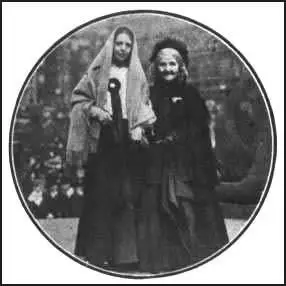Parliamentary Campaigns
After the Liberal Party victory in the 1906 General Election, the new Prime Minister, Henry Campbell-Bannerman, agreed to see a deputation from people campaigning for the vote. The group that met him included Emmeline Pankhurst, Emmeline Pethick-Lawrence, Annie Kenney, Elizabeth Wolstenholme-Elmy and Keir Hardie, the leader of the Labour Party.
At the meeting Campbell-Bannerman told the group that he was personally in favour of women having the vote but his Cabinet was opposed to the idea. The women were very disappointed with this response. Many suffragists were members of the Liberal Party, and they were convinced that after the defeat of the Conservative Party in the General Election, the new government would give women the franchise.
In October 1906, the NUWSS announced that in future they would put up their own independent male candidates to run against Liberal politicians who were opposed to votes for women. The following year the WSPU began opposing all Liberal MPs at by-elections.
In April 1908 Henry Campbell-Bannerman died and was replaced by Herbert Asquith, a strong opponent of women's suffrage. Members of the WSPU now decided to declare war on the Liberal government and over the next few years they made life difficult for leading members of the party wherever and whenever possible.
In 1910 the Liberal government introduced a bill to give women the vote. Although leading politicians such as Winston Churchill and David Lloyd George spoke against it, the vote that followed the second reading suggested that it would eventually be passed. However, with the WSPU increasing its campaign of violence, some MPs changed their mind on the issue and on 28th March, 1912, the bill was defeated.
Keir Hardie, the leader of the Labour Party, had always supported women's suffrage. However, some members of the party were unhappy with the idea because at that time a large number of working class men were still without the vote. In 1912 Hardie was able to convince the party to support votes for women. As a result of this new policy, the NUWSS announced that in future they would be supporting Labour candidates in parliamentary elections.

the meeting with Henry Campbell-Bannerman on 19th May, 1906.
Primary Sources
(1) Emmeline Pethick-Lawrence was one of the women who met the prime minister, Henry Campbell-Bannerman, on the 19th May, 1906.
A little procession accompanied our deputation to the Prime Minister, including a body of women textile workers who came from Lancashire and Cheshire, and a group of working women from from the East End. One of the most touching figures in the procession was old Mrs. Wolstenholme-Elmy, who had worked all her life in the old suffrage movement. She must have been very pretty as a young woman, for although very fragile and weak, her complexion was still lovely and she had little grey curls that framed her pink and white face. She was so tiny and so tottery that it seemed as if a breath of wind would blow her away, but insisted on walking in the procession and was as keen and as eager as the youngest. Mrs. Pankhurst was the speaker for our deputation, and beside her walked Keir Hardie. The Prime Minister listened to the eight speakers with attention. Then he rose to reply. He made a long speech in which he expressed his approval of our demand, his belief that if granted it would benefit the whole country. But though he spoke as a supporter, he struck a dismal note at the end and said that as his Cabinet was opposed, it would never do to make any pledge. Keir Hardie, in a gracious speech of thanks to the Prime Minister, made it quite clear that women could not be expected to accept his statement as final.
(2) Sylvia Pankhurst described Keir Hardie's attempts to introduce a bill to give women the vote in April, 1906, in her book, The Suffragette Movement.
On April 25, 1906, Keir Hardie introduced the resolution: "That in the opinion of this House it is desirable that sex should cease to be a bar to the exercise of the Parliamentary franchise," was moved and seconded in short speeches in order that the opponents should have no excuse for urging that there had been no time for their own side to be fairly heard. Then Mr. Cremer rose to speak in opposition. His speech was grossly insulting to women and altogether unworthy of a Member of the House of Commons. Both by his words, his voice and gestures he plainly showed his entire view of women to be degraded and indeed revolting.
(3) William Randall Cremer, MP for Shoreditch, speech in the House of Commons (25th April, 1906)
I have always contended that if once we opened the door and enfranchised ever so small a number of females, we could not possibly close it, and that it ultimately means adult suffrage. The government would then be handed over to a majority who would not be men, but women. Women are creatures of impulse and emotion and did not decide questions on the ground of reason as men did.
(4) How MPs cast their vote on the Women's Suffrage Bill (28th March, 1912)
For
Against
Liberals 117
73
Conservatives 63
114
Labour 25
0
Irish Nationalists 3
35
Total 208
222
